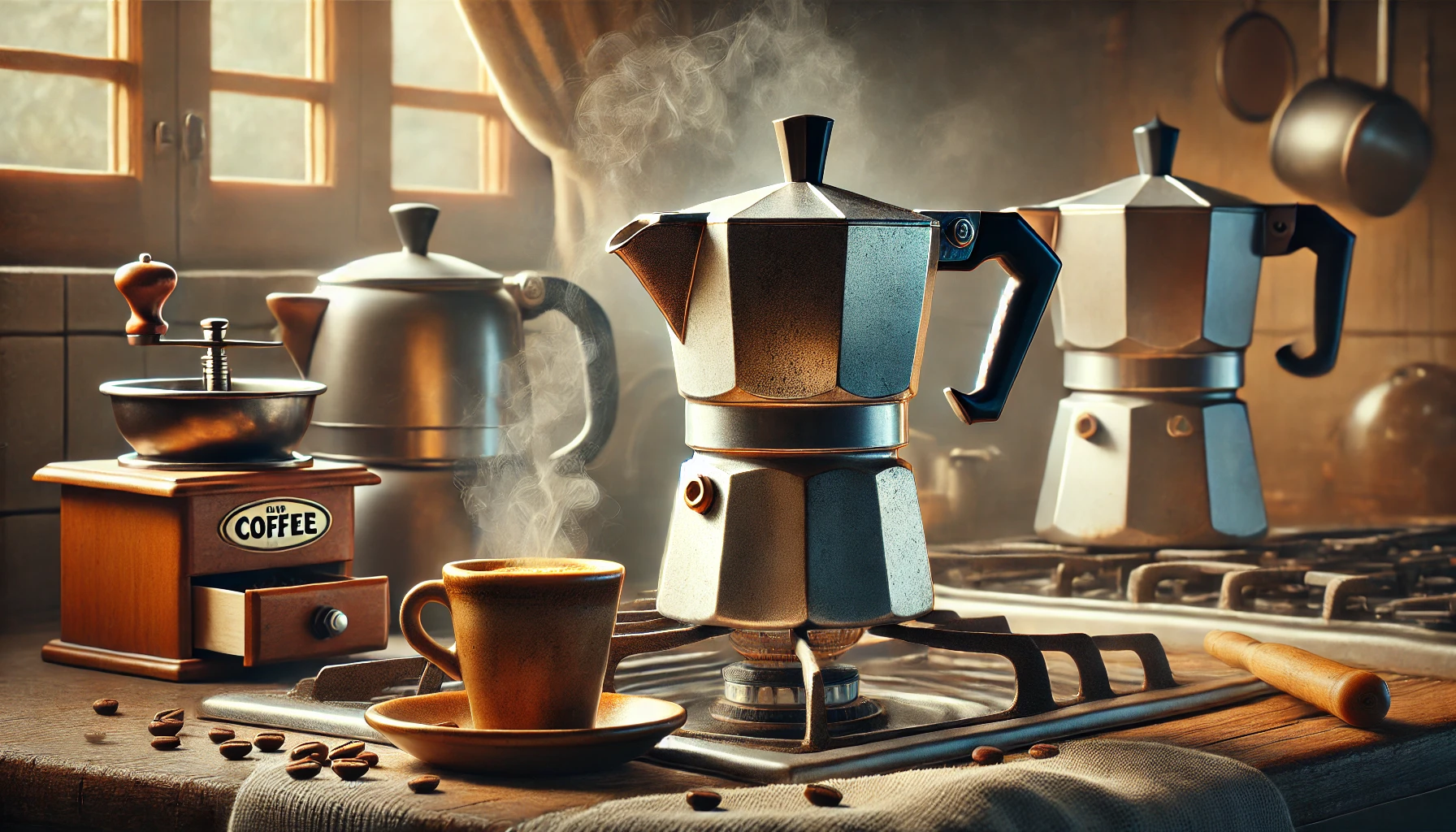The Moka pot, also known as a stovetop espresso maker, is a beloved classic in the world of coffee. Invented in Italy in the 1930s, it remains one of the most iconic and accessible ways to brew a strong, bold cup at home.
Whether you’re new to the Moka pot or want to refine your technique, this guide will walk you through the process to help you get the richest, most flavorful coffee possible—without bitterness or mess.
What Is a Moka Pot?
The Moka pot is a small, aluminum or stainless steel coffee brewer that uses steam pressure to push hot water through finely ground coffee. While it’s sometimes called a “stovetop espresso maker,” it doesn’t produce espresso in the traditional sense, but rather a strong, concentrated brew with a rich flavor and intense aroma.
It’s especially popular in Italy, Latin America, and among coffee lovers who appreciate simple tools with bold results.
Parts of the Moka Pot
Understanding the three main parts helps you use the Moka pot more effectively:
- Bottom chamber – holds the water
- Filter basket – holds the ground coffee
- Top chamber – collects the brewed coffee
Some models include a gasket and safety valve for added security.
What You’ll Need
- Moka pot (3-cup, 6-cup, or 9-cup sizes are most common)
- Fresh coffee beans (medium-fine grind)
- Burr grinder (for consistency)
- Kettle or heat source
- Filtered water
- Stove (gas or electric)
- Timer or watch (optional)
Step-by-Step Guide to Brewing with a Moka Pot
Step 1: Heat the Water Separately
Start by boiling filtered water in a kettle. Heating the water separately before adding it to the Moka pot helps prevent the coffee from sitting too long on the heat, which can cause bitterness and metallic flavors.
Step 2: Fill the Bottom Chamber
Fill the bottom chamber of the Moka pot up to the safety valve with hot (not boiling) water. Avoid covering the valve—this is essential for pressure safety.
Step 3: Add Coffee to the Filter Basket
Grind your coffee to a medium-fine consistency—slightly coarser than espresso, finer than drip. Fill the filter basket with ground coffee to the top and level it off, but do not tamp it down. Gently shake or tap to settle the grounds evenly.
Step 4: Assemble the Moka Pot
Carefully place the filter basket into the bottom chamber, then screw the top and bottom parts together. Use a towel or oven mitt if the bottom chamber is hot. Ensure it’s secure but not overtightened.
Step 5: Place on the Stove Over Medium Heat
Put the assembled Moka pot on the stove over medium heat with the lid open (you’ll close it later). Make sure the handle isn’t over direct heat.
Within a few minutes, you’ll hear a gurgling sound as the coffee begins to fill the upper chamber. When it’s about ¾ full and the flow slows, remove it from the heat and close the lid.
Let the remaining pressure finish pushing the last bit of water through.
Step 6: Cool the Base (Optional)
Some people like to run the bottom chamber under cold water to stop extraction and avoid bitterness. This isn’t mandatory but can result in a cleaner-tasting brew.
Step 7: Pour and Enjoy
Give the top chamber a gentle stir to mix layers of the brew. Pour into small espresso cups or a larger mug, depending on preference. Enjoy it straight or with milk and sugar.
Tips for Better Moka Pot Coffee
- Use fresh, high-quality beans. The Moka pot emphasizes flavor intensity, so stale coffee will be more noticeable.
- Don’t tamp the grounds. Tamping can restrict pressure and result in over-extraction.
- Keep it clean. Wash all parts with water after every use. Avoid soap, which can damage aluminum pots or leave residue.
- Experiment with ratios. Try different bean origins and roast levels to discover your ideal cup.
Common Mistakes to Avoid
- Using too fine a grind (leads to clogging or bitter taste)
- Overfilling the water chamber (can block the valve)
- Brewing on high heat (causes burnt or metallic flavors)
- Not drying parts properly (can lead to corrosion or build-up over time)
Once you get the hang of it, the Moka pot becomes a dependable daily tool that delivers strong, satisfying coffee with minimal fuss.
How Does Moka Pot Coffee Compare to Espresso?
Moka coffee is often referred to as stovetop espresso, but the two are different:
- Pressure: Moka pot brews at ~1.5 bars of pressure, espresso at 9 bars
- Texture: Espresso has thicker crema and more body
- Flavor: Moka coffee is intense but slightly more rustic and less concentrated than espresso
Still, the Moka pot is a fantastic alternative for those who want bold coffee without the cost or complexity of a full espresso machine.
Final Thoughts: Timeless, Bold, and Simple
The Moka pot is a brilliant blend of tradition and function. With just water, heat, and coffee, it delivers a rich, aromatic brew that captures the essence of old-world coffee culture.
Whether you enjoy it black or with milk, as your morning ritual or afternoon pick-me-up, mastering the Moka pot brings lasting coffee satisfaction—one strong cup at a time.
